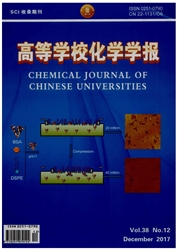

 中文摘要:
中文摘要:
通过Monte Carlo模拟结合原始路径分析(PPA)的方法,阐述了缠结高分子薄膜的界面动力学与缠结程度的关系.研究发现,以吸附势能的临界值εwc≈-0.6 kBT附近为界,当墙壁-高分子作用势能从弱吸引到强排斥变化时,界面层中的链移动快于中心层,只有当墙壁的吸引作用增强到一定程度时,界面层中的链移动才会慢于中心层.界面动力学受到促进或阻碍可能与界面层和中心层的缠结程度直接相关:界面层的缠结程度保持在本体水平上基本不变;中心层的缠结程度在强吸引表面上低于界面层,而在弱吸引和排斥表面上高于界面层.此外,中心层和界面层中高分子链受限程度的变化对薄膜界面动力学行为的转变产生一定影响.对于薄膜中链密度分布情况随墙壁-高分子作用势能变化的分析为相关的物理化学机制提供了理论依据.
 英文摘要:
英文摘要:
We investigated the relationship between the interracial dynamics and chain entanglement of polymer melts in confinement by means of the lattice Monte Carlo simulations using the bond-fluctuation model, combining the primitive path analysis. When the wall-polymer interaction varies from weakly attractive interaction to strongly repulsive interaction, chain mobility in the interfacial region is higher than that in the inner region. Only when the wall-polymer attraction is stronger than a critical adsorption strength will chain mobility in the interfacial region be lower than that in the inner region. The facilitation or retardation of interface dynamics may be directly related to the degree of entanglement in the interfacial and inner regions: the entanglement degree in the interfacial region retains the bulk level despite of the wall-polymer interaction; the entanglement degree in the inner region is lower than that in the interfacial region when the polymer film is confined between strongly attractive walls, but it is higher when the film is between weakly attractive or repul- sive walls. The variations of the confinement degree of polymer chains in both interfacial and inner regions also have an impact on the interface dynamics. Analysis on chain density distribution in the film as a function of the wall-polymer interaction provides a certain explanation for the related physical mechanisms.
 同期刊论文项目
同期刊论文项目
 同项目期刊论文
同项目期刊论文
 期刊信息
期刊信息
